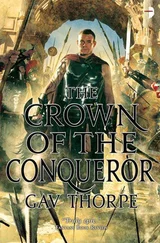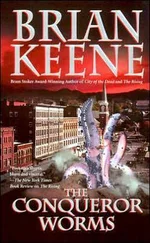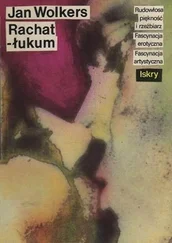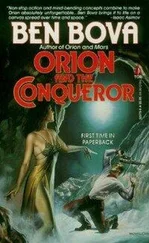Jonas sat amid all the brass and the Oriental rugs, patiently copying the inimitable illustrations in Shetelig’s book, mainly those of the figures from the Academic’s dragon head, including some fold-out spreads which gave a clearer idea of the composition — in other pictures individual figures from an animal pattern had been separated, or rather disentangled, from one another. What an edifying experience. Jonas felt as though he were drawing the dream that had haunted him for so many years. That he was turning something abstract into something concrete. Sometimes he had to colour in the different creatures to make them easier to see, much as his big brother Daniel would later do with the interwoven source texts in the Old Testament. And it was these studies, this painstaking copying, which taught Jonas one of his most crucial lessons, one which was to have a bearing, not least, on his work with television: that Norwegians do in fact have something to contribute to world civilization. Even if imitation seems to be the mark of Norwegian art, it may be that if one goes on copying and recopying these copies, in the end it will suddenly give birth to something unique and original — something new. As if one’s appendix had unexpectedly turned into a womb, to anticipate an idea with which Jonas would later become acquainted.
That summer’s day on Bygdøy also endowed him with a passion for woodcarving — which fitted very well since, after the rather namby-pamby handwork of fifth grade they were now to have proper woodwork classes. And it is no exaggeration to say that Jonas displayed the most extraordinary aptitude for and, above all, delight in only one subject: woodwork. It seemed that even at this point he knew what his life’s work would be, no matter which profession he chose: just once to carve a figure like the Academic’s, the perfect dragon head.
As early as the autumn of sixth grade he made a start on his first head, with the woodwork teacher’s blessing, since Jonas had completed the obligatory chopping boards and bowls, shelves and bats in double-quick time. The teacher, a keen fiddle-maker, even allowed Jonas to stay behind after school on those afternoons when he was working on his instruments.
Sometimes, especially at the start when he often made a wrong cut or wasn’t sure how best to proceed, Jonas also took the bus out to Bygdøy alone, to see Sverre G. Sundbye, the Museum of Antiquities’ resident woodcarver: which is to say, not only did he have his workshop there, round the back of the Viking Ship Museum, he did actually live there. Luckily for Jonas, just at that time Sundbye was working on a copy of an animal-head post, the one known as ‘the Carolingian post’ — the finished result is, by the way, on display in the depository of the Antiquities collection at the Museum of History. Jonas and Sundbye became firm friends. The elderly woodcarver, who was otherwise known to be a bit of a loner, had nothing against having a little disciple and gladly taught him some tricks of the trade, as well as giving Jonas tips on tools and types of wood — and, above all else, on the greatest challenge of woodcarving: ‘The hardest part,’ Sundbye said, ‘is the actual composition of the design, to be able to visualize the lines, the links between one part and another, the hidden connections, if you like.’ In other words, it was here at the woodcarver’s bench in the basement of the Viking Ship Museum that Jonas Wergeland began his apprenticeship as a television producer.
As a grown man, when he moved in to the Villa Wergeland, taking over the house from his mother, one of the first things he did was to install a woodwork bench in one of the smaller rooms and put up a cupboard in which to keep his tools, including a collection of almost fifty different wood gouges — as well as some old ‘Acorn’ iron chisels which Sundbye had given him. This became his most fruitful pastime, to stand in this workshop with a piece of birch-wood or — when he became adept enough — maple or pear-wood in his hand, holding it up to the light, like another Michelangelo with a chunk of stone, to see whether it might contain the perfect dragon head: to stand there hour after hour, cutting away at the wood; for the fifth or sixth or seventh time in his life trying to reproduce the Academic’s masterpiece, to bring it still closer to perfection. And as he was carving, following a pattern which he now knew almost by heart, it was as if he were pulling back the skin from the dragon’s head to disclose the structure underneath, the veins, the nerves; and he could make believe that these interlacing bands constituted the very essence of the dragon. Inside that hideous, snarling creature there dwells something beautiful, he always thought. The swans betray the fact that the dragon’s thoughts are soaring.
Although Jonas Wergeland never completed any university or college course, and although he was an artist within his own field, he thought of himself as an academic — an academic in the special sense of the word as it pertained to the Oseberg ship. Jonas Wergeland had no wish to give lectures; he wished to carve his pictures into people’s heads.
On the Friday evening when, as part of its celebrated venture Thinking Big , NRK screened the programme on Gro Harlem Brundtland, Norway’s and Scandinavia’s first female prime minister, Jonas Wergeland was strolling along Bygdøy Allé, unconsciously humming the chorus of Jens Book Jenssen’s old favourite ‘When the Chestnuts Blossom on Bygdøy Allé’ because it happened to be just that time, and the chestnuts were in full bloom. Jonas had been to the Gimle Cinema to see a film starring Diane Keaton, had almost had the cinema to himself, and it was only as he was cutting across Solli plass that it occurred to him how few cars there were on the road, how few people at all: as if, while he had been sitting, all-unsuspecting, in the cinema, the city had been struck by some terrible catastrophe and only he and a handful of others had survived. Jonas Wergeland carried on down Drammensveien, then pulled up short, sensing that he was being watched; he turned and almost jumped out of his skin. He was staring straight into the face of another person. Or at least he thought it was that of another person. It took him several seconds to realize that he was standing face to face with himself. It always took him a while to recognize his own features on the television; it was as if the medium changed him, gave him a new identity. Jonas stood there watching close-ups of himself, the one constant in the series, alternating with close-ups of the prime minister, Gro Harlem Brundtland — as she was played, with great authority and uncanny accuracy, by Ella Strand, that is. It was a weird moment: Jonas Wergeland stopped in his tracks and held captive — or even, why not: seduced — by his own gaze. Suddenly he understood why the city seemed deserted: just at that moment the large majority of Norwegians were sitting at home in front of their TV screens, watching his programme.
Jonas went on standing in front of that shop window on Solli plass, could not tear himself away from his own opus on Gro Harlem Brundtland, in which the key scene — to many people’s surprise — took place in a Chinese home. Jonas had racked his brains for months before, with the deadline approaching for this, the last programme in the series, he figured out how to present a personage as overexposed as Gro Harlem Brundtland; everything fell into place when he got wind of an incident in China which, more or less indirectly, said more than anything else about this exceptionally strong-willed and ambitious Norwegian woman and her standing, one might almost say her clout and her reputation; the name Harlem Brundtland which, in the world at large had some of the same ring of quality and dynamism to it as Harley-Davidson.
Читать дальше











